Reviews
Frederick Wiseman
USA, 1983
Credits
Review by Evan Kindley
Posted on 14 June 2008
Source Zipporah Films DVD
Categories Frederick Wiseman
“Style is a perfection of a point of view,” says a retail buyer late in Frederick Wiseman’s The Store. If this is true, it could be fairly said that Wiseman’s movies have no point of view and, in a sense, no style: he likes to find the point of view manifested in any given environment and situation and record it, rather than controlling it or assimilating it to his own perspective. In the case of the Neiman-Marcus department store in Dallas, Texas, one doesn’t have to look far to find that point of view in evidence. It’s imposed everywhere, from the displays to the bearing of the salespeople to the language used to describe the services and products. It’s what one executive describes as an “international, European-attitude” style; a style which, for an awful lot of people, then as now, just is style as such.
And it must be said that Wiseman does full justice to this style. What impresses first about The Store is Wiseman’s cautious admiration for the formal qualities of the Neiman-Marcus store: not just the way it looks, but the way it conducts itself, the delicate interplay of the higher and lower levels, the utter coherence of the system. The Store was Wiseman’s first documentary filmed in color, and between this and the fact that it focuses mostly on upper-class people rather than lower, there is a sense of unusually high production value about it. (Wiseman told the New York Times that shooting the film at Neiman-Marcus was “like being handed a $20-million set.”) Perhaps because of its gargantuan subject, The Store actually requires a fair amount of formal finessing in the editing. Wiseman groups his subjects roughly by theme, and often uses musical and sound bridges to take us from one scene to another. Throughout the movie Wiseman alternates longer scenes with more atmospheric footage, and he often uses brief shots of elevators, stairs or escalators as transitional devices to get us from one level of the store to another. About halfway through the scenarios start repeating; we see the same customers in different areas of the store at different times of day (or, presumably, on different days: The Store couldn’t have been filmed within twenty-four hours). There are a number of ingenious call-backs to earlier images and events, as when a group of Christmas carolers we see practicing near the beginning of the film finally give their performance towards the end.
As in all of his films, Wiseman stays carefully neutral: the film is not an exposé of the insidious workings of capitalism, nor is it a story about any particular character other than the store itself. Seeing a department store in this way, in all its aspects rather than simply from the point of view of a customer or consumer, inevitably raises some political questions, however. For one thing, there’s the almost total gender segregation, and the fact that there are so many more female customers and salespeople than male. But we also see the boardrooms of Neiman-Marcus, where the overwhelming majority of executives present are men, often with neatly trimmed beards, and holding forth on the “grand purpose” of Neiman-Marcus, “attitudes in baked goods,” or “the whole TV thing.” There are a few women in these boardrooms, but they’re mostly silent, listening attentively to the philosophy of style being promulgated by male experts. Considered separately, these two sets of facts - viz., women like shopping; most corporate executives are men - don’t seem very surprising; taken together, they begin to take on a new kind of interest.
It’s also interesting that the scenes set on the higher levels of the store tend to be more verbal - conversations between salespeople and potential customers, monologues by corporate executives, etc. - whereas in those focusing on the more menial workers at Neiman-Marcus, the interest tends to be primarily visual: workers sewing and pressing garments, punching time-cards, wrapping gifts for delivery, a security guard searching bags, a janitor polishing a grand piano. (One wonders if this absence of small talk was an editing choice on Wiseman’s part or whether it was empirically the case that these people simply didn’t talk as much.) In many of these scenes Wiseman goes to extreme close-up, zeroing in on the hypnotic competence of these individuals, especially those doing small detail work. It’s at this level that the precision and discipline of Neiman-Marcus is most impressive.
Most of The Store serves as evidence for a simple, eminently convincing thesis: Neiman-Marcus is an incredibly well run department store. There are a few surprises in the film, however, a few examples of what the sociologist Erving Goffman would call “breaking the frame.” Periodically Wiseman introduces elements of left-field surrealism into the mix, as if daring the Neiman-Marcus machine to absorb them: a clown riding an escalator; a man walking by in Peter Pan costume; or, in the longest and weirdest sequence in the film, a singing stripper in a chicken suit at a secretary’s birthday party. These points of unexpected deviance from the normal system of operations at Neiman-Marcus offer comic relief among the sometimes numbing banality of The Store, but they also help place the film in broader cultural context. It’s interesting to compare The Store to two other later, somewhat quirkier takes on 1980s Texas: David Byrne’s True Stories1 and Errol Morris’ The Thin Blue Line. Taken together, it’s possible to see these films as symptomatic of a late 20th century interest, on the part of East Coast intellectuals, in middle-American, upper-middle-class everyday life. (David Lynch would also probably belong in this category somewhere.) In The Store, everybody’s Texanness is both largely irrelevant - except for their accents and the occasional local reference, the film could be set anywhere in America - and somehow intrinsic to its overall effect. It has something to do with the strange disjunction between the mostly imported European wares the store offers (Neiman-Marcus has “the largest Christian Dior account in the country”) and the very American milieu they’ve ended up in, with only slight attempts made to bridge the gap (“sable is a great Texas coat”). Whether this relatively familiar incongruity “says something” about our culture, or the global structure of late capitalism in which it’s long been embedded, is something Wiseman leaves to other filmmakers, and to his viewers, to decide.
^1^ The haute couture fashion show in The Store may have been a model for the considerably more bizarre runway sequence in True Stories, for instance. ↩
More Frederick Wiseman
-
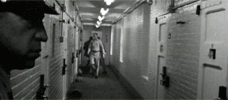
Titicut Follies
1967 -
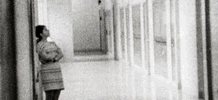
High School
1968 -

Law & Order
1969 -

Basic Training
1971 -
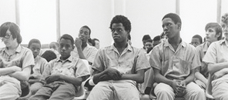
Juvenile Court
1972 -
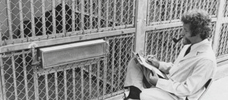
Primate
1974 -
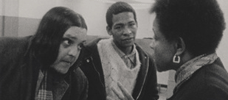
Welfare
1975 -
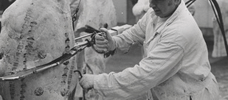
Meat
1976 -
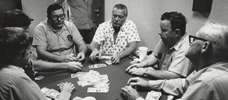
Sinai Field Mission
1978 -
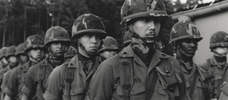
Manoeuvre
1979 -

Model
1980 -
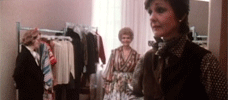
The Store
1983 -

Blind
USA -
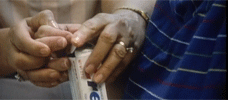
Adjustment & Work
1986 -

Missile
1987 -

Central Park
1989 -

Near Death
1989 -

Aspen
1991 -

Zoo
1993 -

High School II
1994 -

Ballet
1995 -
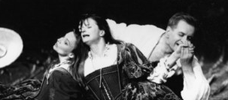
La Comédie-Française
1996 -
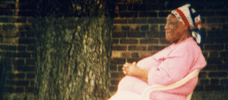
Public Housing
1997 -

Belfast, Maine
1999 -

Domestic Violence / Domestic Violence 2
2001 / 2002 -
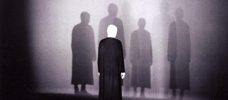
The Last Letter
2002 -

State Legislature
2006
We don’t do comments anymore, but you may contact us here or find us on Twitter or Facebook.



